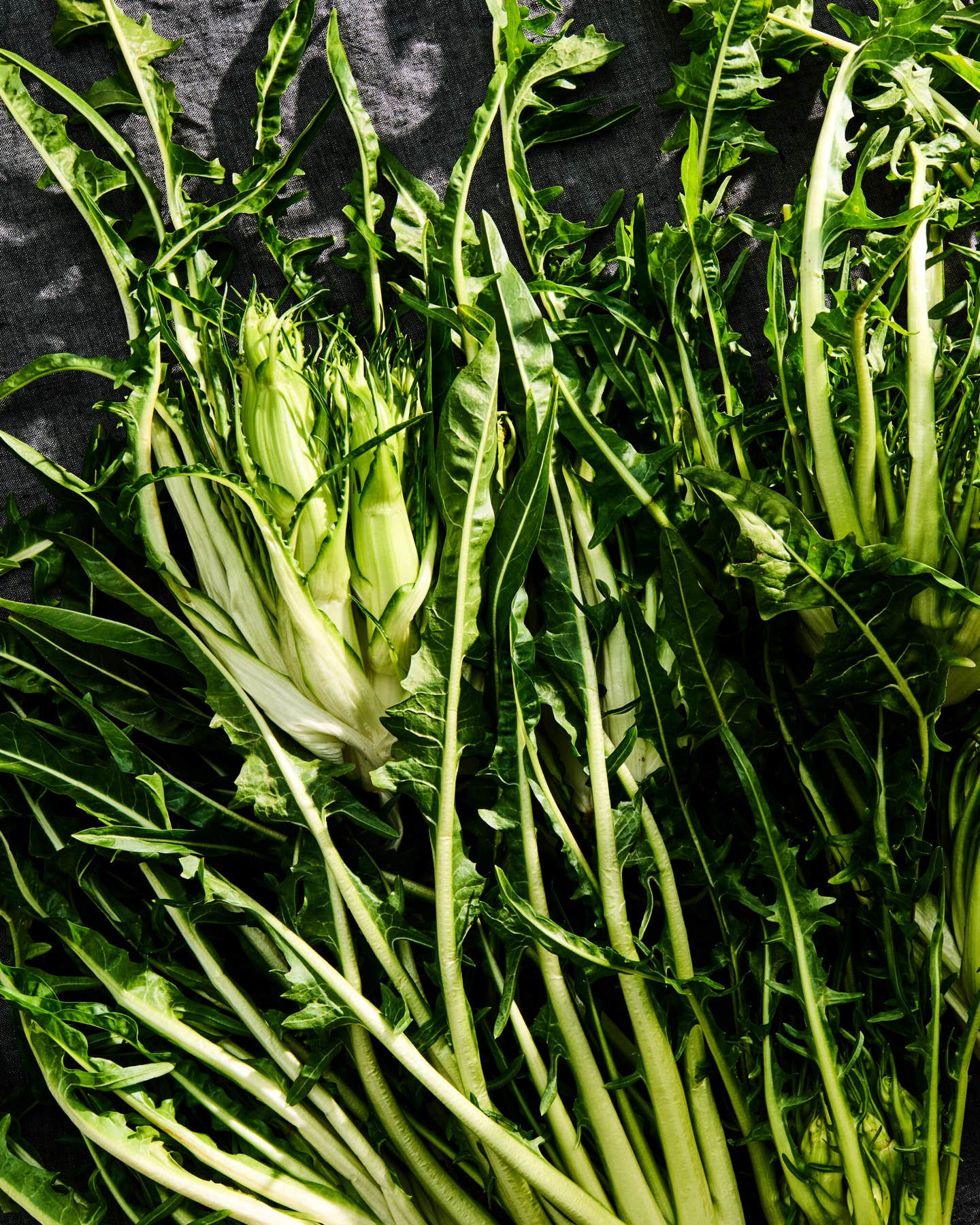The Science of Savoring
When it comes to enjoying your food, the ‘how’ might be as important as the ‘what.’

Welcome to Gut Check, our column dedicated to the complex, ever-evolving relationship between food and our bodies. Whether you’re curious about mindful eating or want to understand what makes picky eaters picky, read on and let award-winning journalist Betsy Andrews answer all your burning questions.
This past July, I turned 60, and I started thinking more about my health. To me, the idea of healthy eating has always been a drag. I’m from Philadelphia. I want my cheesesteak. The aroma of caramelized meat and onions, the luscious goo of the Whiz, the burn of the long hots, the pillowy heft of the roll. Popping statins to quell my cholesterol, I’ve long eschewed diet culture in favor of truly enjoying my meals.
But recently, something changed. The cheese and long hots are gastrically challenging, the bread is bloating, and the meat is a climate-damaging guilt trip. How, in that context, can I continue to love my cheesesteak? I am a food writer. Pleasure is ostensibly my subject and privilege. Yet I wonder how often I actually enjoy my meal, being prone to scarfing down lunch at my desk by day, then posting photos of fancy restaurant food by night. When I worked at SAVEUR in its onsite days, all the recipe testing, product samples, press meals, and long hours fueled by expense-account pizza meant weight gain. We called it the “Saveur 30.” We were privileged eaters, but I’m not so sure we were pausing to actually savor our meals.
In recent years, nutritionists and dietitians have started centering the idea of savoring—the pleasure of tuning in—as a way of improving our relationship to food. Many of them work with people who’ve cycled on and off diets all their lives. Is there something for non-dieters like me to learn? Can I have my cheesesteak and eat it, too?
The Oxford English Dictionary defines savoring as, “In modern use, to taste with relish, to dwell on the taste of, also figuratively, to give oneself to the enjoyment or appreciation of.” With eating, the enjoyment is both figurative and literal because it is not a simple act. “People don’t eat nutrition; they eat food,” says registered dietitian and wellness and nutrition expert Tamara Melton. “They’re looking for flavors, textures, temperatures, sounds. Pleasure hormones in our brains get turned on once we start eating.”
Beyond that hit of dopamine, lots more happens. In Gastrophysics: The New Science of Food, psychologist Charles Spence, head of the Crossmodal Research Laboratory at the University of Oxford, invites us to imagine eating a peach. “Your brain has to bind together the aromatic smell, the taste, the texture, the color, the sound as your teeth bite through the juicy flesh, not to mention the furry feeling of the peach fuzz in your hand and mouth.”
Your thalamus processes that information and filters it to your cerebral cortex, where it’s connected to a slew of associations and memories. If you pay attention as you eat, slowly savoring each bite, those random thoughts organize themselves into a deeper enjoyment of your experience. As Spence told me when we spoke, “It’s like the pleasure of standing in front of a work of art and the transformative moment when you understand it and cry, ‘Aha!’”
That’s precisely the type of pleasure chef and psychologist Caroline Baerten promotes. Founder of Brussels’ Centre for Mindful Eating and Nutrition, Baerten is a disciple of Buddhist teacher Thich Nhat Hanh, who popularized mindfulness—being present in the moment—through books like 2014’s How to Eat. During retreats, Hanh guides attendees in eating a single raisin. “Thanks to 100-percent attention to what I was doing, I was blown away. I had never tasted a raisin in such a profound way,” says Baerten. Stopping to savor a single raisin is likely a laughable proposition to the 39 percent of North American workers who basically never break for lunch (despite 94 percent saying they’re happier when they do). Mindful eating, then, is triage. You do what you can, taking a moment or two during eating to focus on your sense of smell, taste, or touch, checking in with how you and your body are feeling.
After work, mindfulness can mean turning off the television and setting the table to essentially feel like an invited guest in your own home. “It creates this almost sacred moment where we can find this pleasure while we are eating, through the senses,” says Baerten.
A growing body of research points to the long-term psychological benefits of mindfulness. It’s an antidote to “an epidemic of stress,” says Dr. Lilian Cheung, director of mindfulness research and practice at the Harvard T.H. Chan School of Public Health and author, along with Hanh, of Savor: Mindful Eating, Mindful Life. The research backs her up. She also cites studies showing mindful eating’s association with decreased binge eating and a higher-quality diet.
That doesn’t mean, nor do studies show, that mindfulness works for weight loss. “Viewing mindfulness and savoring through the lens of diet culture is problematic,” says clinical psychologist Alexis Conason, author of The Diet-Free Revolution. “I’m about tuning people in to what feels good and doesn’t. Allowing ourselves to have food is a radical act when we’re told most of our lives that our pleasure is gluttonous.”
Proponents of intuitive eating, another anti-diet approach, are even more explicit about the need for pleasure. As Evelyn Tribole and Elyse Resch, the method’s co-founders, write in Intuitive Eating, “When you eat what you really want, in an environment that is inviting, the pleasure you derive will be a powerful force in helping you feel satisfied and content.” You can use satisfaction to achieve balance, whatever the size of your body, so that your enjoyment of food is the driver behind experiencing a comfortable level of both hunger and fullness.
Savoring your food, ultimately, helps you savor the rest of your life. Indeed, intuitive eating’s connection to “numerous adaptive psychological constructs” has been asserted in studies. “People have better moods, self-compassion, and they’re less connected with eating disorders and pathology,” Tribole notes. “They’re able to engage in life.”
Yet, savoring doesn’t have to be an all-in process. Intuitive eating dietitian Christy Harrison, host of the Rethinking Wellness and Food Psych podcasts, notes, “For people who are restricting or binging, savoring can be overwhelming. Distraction—looking at their phone, being out with friends—can be helpful.” Savoring doesn’t have to be, and for some people shouldn’t be, a solitary act. Meals with friends and family, if uncomplicated, can help you really connect with yourself, with others, and with the food you’re eating..
The social context is how Melton, co-founder of Diversify Dietetics, a non-profit promoting diversity in the field, approaches savoring. “Think of a group of friends sitting around eating. They all dig in and go ‘Mmm.’ Social pleasure comes from that collective experience,” she says.
For Melton, whose father is Trinidadian, an essential part of helping people savor their food is honoring the culture it came from. “Often food is the one thing people can experience from home multiple times a day,” she says. “Let’s take away the stigma that what you are feeding to your family is not healthy just because mainstream culture says it’s not. What do you like to eat? What memories is it bringing back? Celebrations, family, customs—Is there a reason why you are craving this kind of food?”
Where does all this leave my cheesesteak and me? Well, I’m biologically programmed to crave it, for starters. “From an evolutionary perspective, there must be a reason we have dopamine,” Baerten said. “Pleasure pulls us toward something. The question is, what gives you not just superficial pleasure but profound, soul-based pleasure? That has to do with connecting with deeper layers within yourself and others.” She wasn’t talking about cheesesteaks, of course. She was thinking of the way you savor broccoli from a grower you come to know at the farmers market. But I certainly feel connected to my family and my community when I’m back in Philly and eat my hometown sandwich.
The next time I order a cheesesteak, I will tune into what feels good and what doesn’t, as Conason says, and not eat it with so many gut-challenging long hots. I’ve also been thinking about something Cheung suggested: “We’re in the habit of saying, ‘I don’t have enough time for lunch, so I’ll eat while meeting the deadline,’” she said. “One way of savoring your food is spending 10 minutes doing nothing but eating. If you’re in a hurry, save the rest for a snack. You’ll get hungry later, and you can have the food again and appreciate it.” Then she mentioned how on Okinawa, one of the planet’s so-called Blue Zones, where people live to be in excess of 100, they make sure to eat to only 80 percent fullness.
I’ll eat my cheesesteak, not like I normally do, while driving. Instead I’ll slide into a booth at the local joint, unwrap the sandwich carefully, ponder the sensations of the meaty, melty filling and its sturdy roll as I eat it, until I feel I am just this side of “Oy, I am stuffed.” I’ll rewrap what’s left contemplatively, and look forward to savoring it the next day, when I feel hungry again.
Keep Reading
Continue to Next Story










